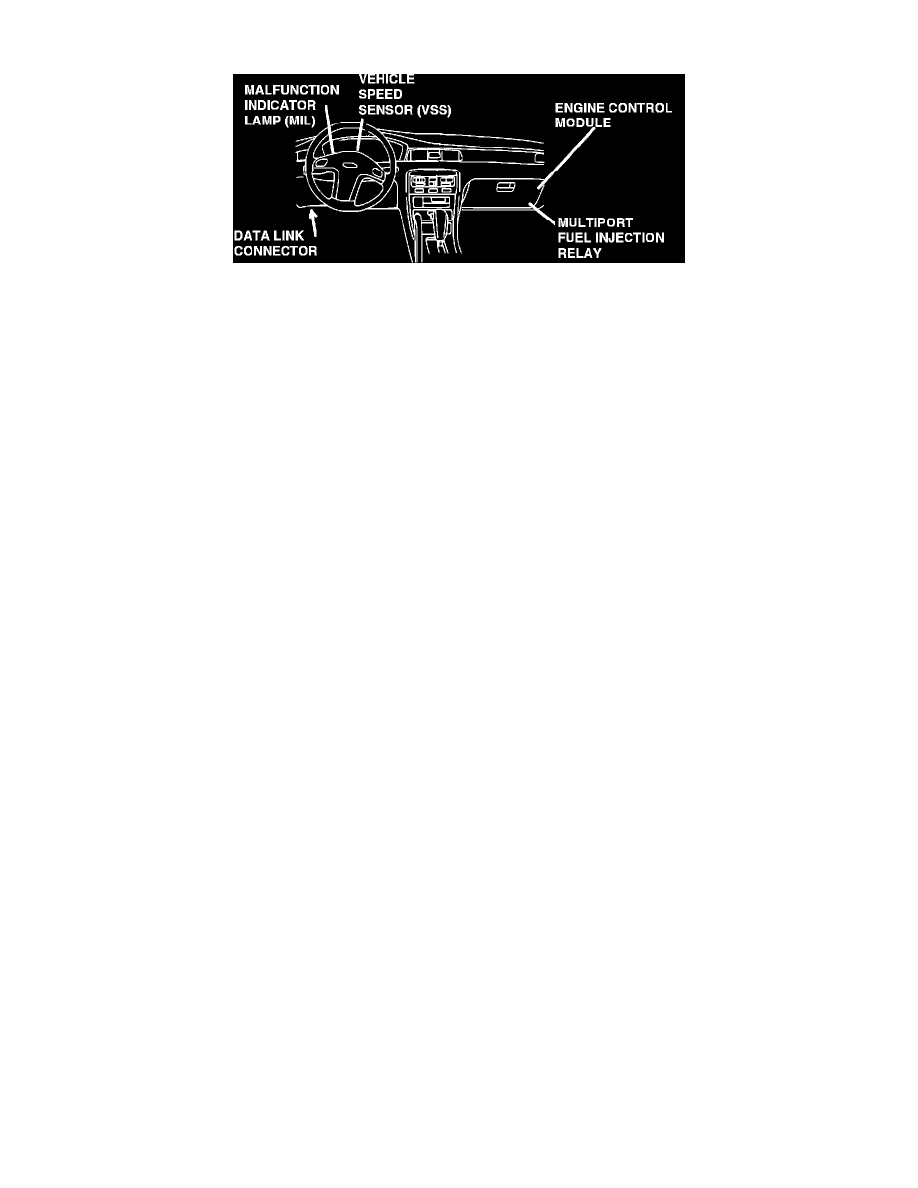Diamante V6-2972cc 3.0L SOHC (1992)

Engine Control Module: Description and Operation
Passenger Compartment Components
PURPOSE
ECM controls; fuel injection, ignition timing, and idle speed.
The ECM also interrupts the operation of the air conditioning and EGR systems, and controls power to the fuel pump (through the Multiport Fuel
Injection Control (MFI) relay).
The ECM consists of an 8 bit microprocessor, random access memory (RAM), read only memory (ROM), and an input/output interface.
Based on information from the input sensors (engine coolant temperature, barometric pressure, air flow sensor, etc.), the ECM determines
optimum settings for the output actuators (injection, idle speed, ignition timing, etc.).
SELF DIAGNOSIS
The Electronic Control Module constantly monitors input and output signals for correct operating range.
If an irregularity occurs, the ECM stores a trouble code which can be accessed via the self diagnosis output terminal.
Diagnostic results can be read with a voltmeter or multi use tester.
ECM trouble code memory is maintained by direct battery voltage so diagnostic results are held in memory even if the ignition key is turned off
(except for the oxygen sensor code).
However, trouble codes will be erased if the battery terminal or the Electronic Control Module (ECM) connector is disconnected.
FAIL-SAFE MODE FUNCTIONS
For operation under certain fault conditions see chart below.
